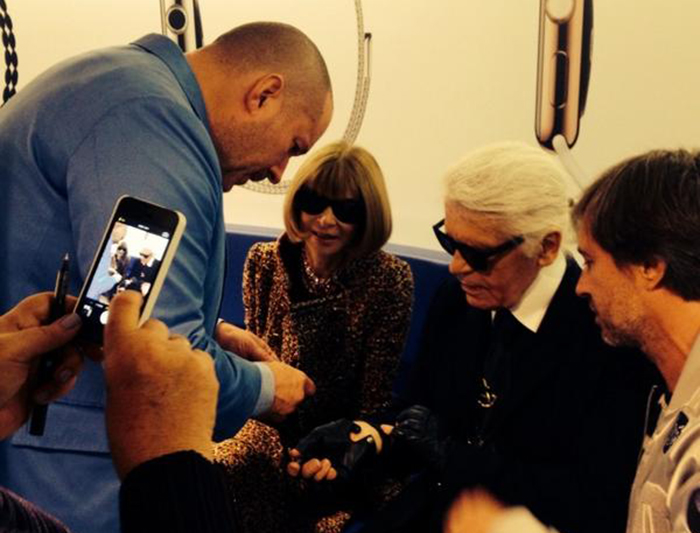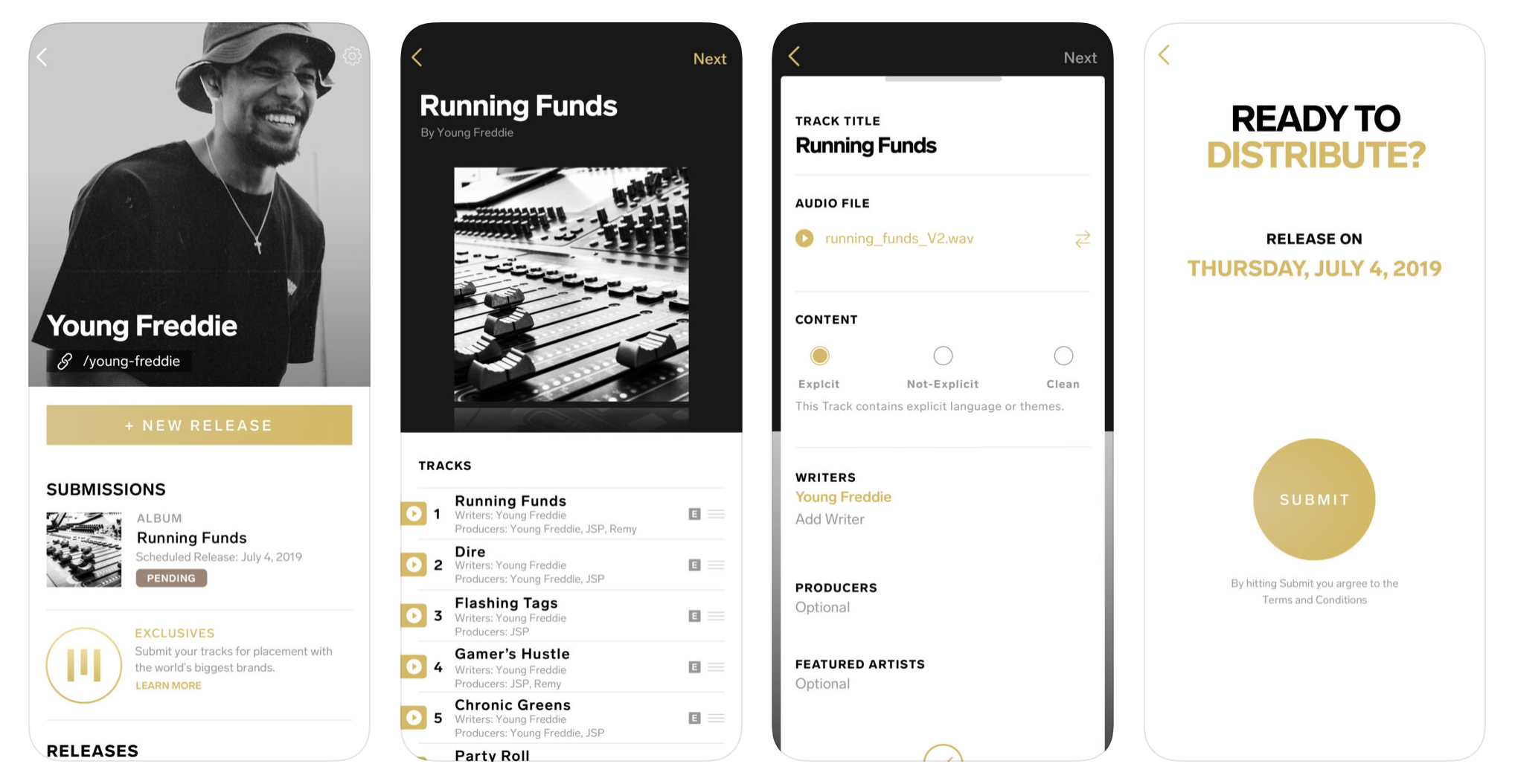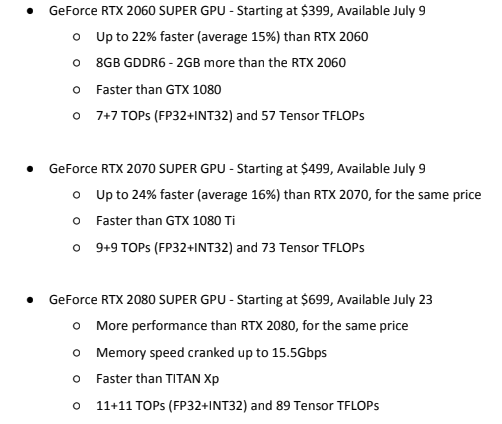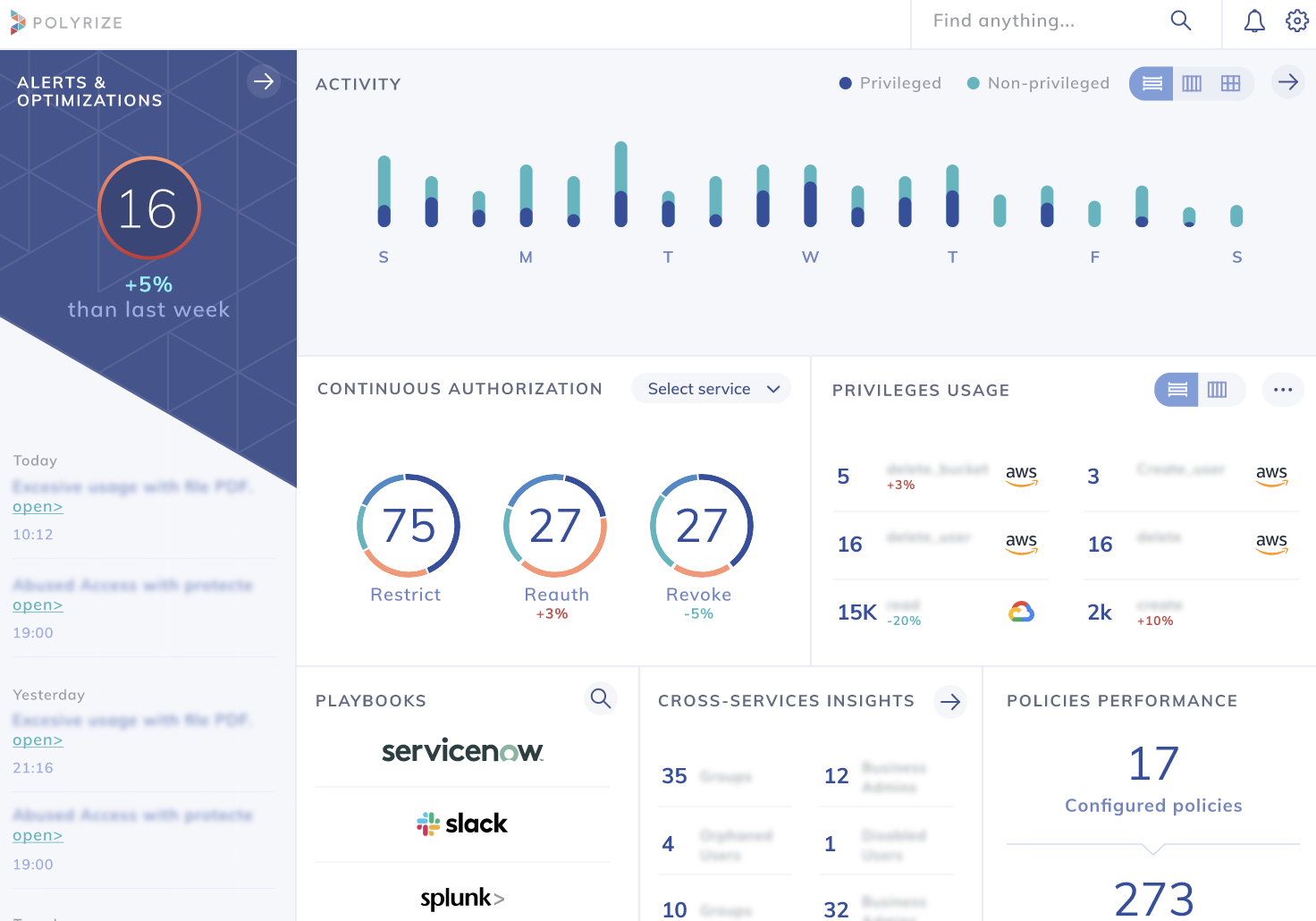Well, this has been interesting. After almost 30 years with Apple, Jony Ive is leaving, to found his own firm LoveFrom with his friend and frequent collaborator Marc Newson — also leaving Apple. The response to this news has been predictably histrionic from Apple watchers and press.
The narratives, to summarize, are essentially that:
- Jony had checked out, become incompetent or just plain lazy
- Apple is doomed because he is leaving
If those narratives look contradictory then you have eyes.
If you take the sum of the breathless (dare I say thirsty) stories tying together a bunch of anecdotes about Jony’s last couple of years, they are trying to paint a picture of a legendary design figure that has abandoned the team and company he helped build, leading to a stagnation of forward progress — while at the same time trying to argue that the company is doomed without him.
Ok.
Ironically (or perhaps inevitably) even the phrasing of the tweets that accompanied these stories were couched in inflammatory positioning. Tim Cook’s email (actually quite plainly stated) was touted as ‘scathing’, the Journal posited the question: ‘Why hasn’t Apple had a hit product in years? A look at the internal drama around the departure of its design chief helps explain.’ A conclusion that its story only hints at.
Most watchers of the company that I know who were asking and listening to Apple people over the past couple of years are aware that Jony has been on borrowed time with the company. Shocking, this was not — a surprise it was always guaranteed to be given how much control Jony keeps over how and when he does press.
Back in 2015, it was clear that Jony wanted to do less paper pushing and more pencil pushing. And the past decade of Apple has been nothing if not an explosion of management challenges. Enormous growth in product volumes, splintering product lines that made an attempt to leave less room under the pricing and feature umbrella and, yeah, a hell of a lot more people.
“Many of Apple’s critics are purely nostalgic,” Ben Bajarin of Creative Strategies puts it. “Wanting Apple to go back to the days when some of the designs were more bold, iconic, possibly polarizing, but in that time Apple was selling tens of millions of products not hundreds of millions of products. This is a crucially important point that many in the public sphere miss. “
All of that growth means that the job of someone like Jony would naturally shift from scooting a pencil around a drafting board to something more like management — or, in Apple’s case, teaching.
I’m not the Journal’s (or any other publication’s, thank god) public editor. So I will not be fisking the stories that have come out about Jony and his work habits. I’ve never been that good at it and I don’t really have the stomach for it these days. I do have thoughts, though about the way that these anecdotes are tied together in a narrative.
Given that I have covered the company closely for years, I know a lot of the people who were involved in some of these situations. Jony did, in fact, move to holding design meetings at his house in SF. They absolutely held design meetings at The Battery to collate device opinion. He has a design studio in other homes like Hawaii and London. He has absolutely spent more time in the city than down at Apple headquarters over the past few years. The design teams, in and out of the industrial design people, absolutely saw less of him than before.
There are also bits and pieces in the various stories over the past few days that are not, as I understand them, accurate, or represented in an accurate context. But the more important point is that no one I know felt that Jony had checked out or abandoned the team.
As he stated himself, Jony was just plain tired. What prolific designer do you know that is excited about doing more management and less design?

Also, I fully reject the narrative that Apple has somehow floundered because Jony has been absentee. During the period, the company has shipped some enormously successful products — including the major category hit Apple Watch. As one note, I found the criticism that Jony wanted a gold watch so that made the Apple Watch a boondoggle to be enormously hilarious.
The gold watch had 2 distinct purposes:
- Jony wanted to make it
- It set expectation that this was a product worth wearing all day
I think it is 100% possible and fair to argue that the first point means Jony had too much power or that it was him exercising that power in a way that felt foreign to Apple’s egalitarian ideals about computing. But the fact is that, regardless of how many they sold, it made a splash and did, in fact, push Apple into the world of fashion and wearable conversation in a way that it hadn’t ever before.
That toe-hold gave them time to figure out what the Watch is actually for and it is a very real success for the company. During the same period, Apple shipped the iPhone X months ahead of schedule, and major updates to every line including the iMac.
I can certainly understand one or more members of the design team resenting the lack of intimate one-on-one time that Jony used to spend with the team when Apple shipped fewer products in more time. And not all of Jony’s influence over the past few years is pristine in hindsight. The MacBook keyboards still suck, I’ll give you that one.
Basically, all design is worth critiquing, and Jony isn’t above that. If something doesn’t work consistently or feel human centric, then it doesn’t matter if 1950’s Dieter Rams himself designed it, it’s crap.
But the argument that Jony derailed product at Apple looks like complete nonsense when you observe the facts. And every design team member I’ve spoken to over the last 4 years has said that Jony, while at times difficult, demanding and intense, has also been an enormous enabling force when it comes to spending the time, resources and energy it took them to get a product or feature to the level they wanted. Resources like on-the-ground materials consultation in China, collaborations with artists around the world, research into the effects of a design — the willingness to ‘do the most’ in search of a solution. None of that went away.
That said, if Jony doesn’t like managing, guess what Jony is not going to be enthusiastic about? As Shel Silverstein put it: “If you have to dry the dishes, and you drop one on the floor, maybe they won’t make you dry dishes any more.”
There is certainly calculus in everything an executive at any big company says publicly — but I think you can believe Jony when he says that he feels like he can be useful elsewhere.
“I certainly have an ambition and feel almost a moral obligation to be useful,” he says in this FT piece. “I feel I’ve been fortunate enough to work with remarkable people over the last 30-plus years and have worked on some very interesting projects and solved some very difficult problems. I feel keenly aware of a responsibility to do something significant with that learning.”
He wants out, and that’s what he’s doing. But he’s not leaving the company in terrible shape, from either an overall perspective and from an internal perspective.
Let’s move away from the anecdotal. What’s more interesting to me than any of this Jony shit talking is where Apple design goes from here.
Apple has put Evans Hankey and Alan Dye in charge of design, reporting to Jeff Williams. Wring your hands all you want about Apple becoming an operations company but, like, where have you been for the last 10 years?
Yes, Apple is a different company now, and it should be. While Jony has given us some amazing work (and some amazing what the hell moments) over the years, its going to be fascinating to watch a new leadership tackle the next era at Apple.
I think it’s also smart of Apple not to announce a single ‘Jony replacement’ at this juncture. Any immediate comparison would likely not do them any favors and this gives the team time to find a new center and a new direction over the next couple of years. I think someone will emerge as the design lead here eventually, but I’m not sure who.
Evans, as I understand it, was hand picked by Jony to lead the ID team as a manager, a job she’s already been doing. She’s a capable design manager with hundreds of patents to her name. More importantly, Apple has a historic and systemic policy that they don’t just put people in to do a job, they put them there to learn from them and to teach them. The Apple way of doing things is institutionalized and taught to new hires.
This institutional tissue, I believe, will survive Jony leaving.
One of the things that struck me the most about a lot of the recent stories is that it painted members of the design team as feckless automatons that could not proceed without Jony approving every move. That’s not true and honestly not even possible. There’s no way Apple could ship on the schedule they have done over the past few years if Jony being late to a meeting would handicap them.
There are a lot of very smart and very talented people at Apple and they are not all named Jony.
I’m also very interested to see how Alan Dye gets on with Apple. He’s got a calm, understated demeanor in person that can come across a bit flat, but he’s clearly very engaged with the task. He’s respected by Apple designers who feel that his work speaks for itself internally and that he has the chops. One of the arcs of Dye’s tenure has been to unify the look and feel of iOS across its platforms in terms of typography like San Francisco.
One of the biggest potholes that the software design team has ever hit, in my opinion, was iOS 7. It needed to be a break with the past for some legitimate reasons, like the expansion of iOS onto new platforms like the car, the watch and beyond. But Jony brought print, not interaction, designers from other parts of Apple in to flesh out the final design and that ended up presenting as a radical new but also radically less usable iOS.
iOS 7, to me, has always reminded me of an apocryphal saying I heard but can’t remember where. It’s about the notoriously difficult to drive Porsche 911: Porsche made a beautiful mistake, and it’s spent 50 years fixing it.
The 911 was a car that was designed to be imbalanced from the beginning by placing the engine in the rear, to emphasize power transfer to the ground via weight and traction. Also, no joke, so you could still fit groceries in it.
Unfortunately, it also enabled massive oversteer, with the car swinging wide on corners incredibly suddenly if pushed too hard. Porsche has refined that design with every iteration, improving every other aspect of the vehicle like traction, larger wheelbase, steering, braking and gearing. Just to get it to a place where the original vision remained intact, but, you know, less fire and dying.
Apple has done much the same since iOS 7, taking a concept that it felt was necessary and continuing to pull it back into a place that feels more usable.
One of the things that stood out to me at the time was that iOS 7 led with a ‘panes of glass’ metaphor. They weren’t all that explicit about it then but it seemed clear to me that they saw this as a way to support all kinds of interfaces from palm first to heads up. An evolution of the information appliance.
Dye and the design team (and Jony, tbf) have spent the last couple of years making big strides fixing the mechanical issues, but it was very exciting to me to see the panes of glass metaphor heavily emphasized at WWDC this year. They’re just panes with depth, texture and hopefully more accessible context this time around.
Even though Jony is a ‘unicorn’ designer, Apple has always thrived on small teams with decision makers, and they’re not all one person. The structure of Apple, which does not rely on product managers, still leaves an enormous amount of power in the hands of the people actually doing the work. I’m not as concerned as a lot of people are that, with Jony leaving, there will suddenly be a slavish hewing to the needs of ‘ops over all’. It’s not in the DNA.
That doesn’t mean however, that there aren’t still question marks. Jony was an enormous force in this company. It is completely natural to be curious, excited and, hell yeah even worried about what his departure will do to the design focused Apple people love to love.

An Adidas Futurecraft shoe with a midsole printed by Carbon
As for me, I hope that there can be a balance struck between the established patterns of Apple design and new schools of thought. No company should remain rooted in the past completely. There are wildly interesting things happening in design and manufacturing at the moment. Trends like programmatic or “AI” design that allow designers to define an algorithm and a set of constraints, and then generate ‘impossible’ shapes out of edgy materials to obtain a result unable to be sketched or sculpted by traditional processes.
The shoe pictured above is a collaboration between an artist and an algorithm. Daniel Arsham, Adidas and a startup called Carbon made this with the help of a design program that understands the goals and materials its working with, but charts its own path to getting there. This is the new school of design.
The compression of the design and manufacturing stacks into one segment is going to be the defining characteristic of this age of product development in my opinion. Apple needs to jump on that wave and ride it.
There’s a Steve quote, prominently displayed on the wall of the Infinite Loop 4 building in its old Cupertino headquarters.
“I think if you do something and it turns out pretty good, then you should go do something else wonderful, not dwell on it for too long. Just figure out what’s next.”
I’d love to see Apple’s design teams do just that, embrace these new schools of thought and find ways to integrate them into the way that it has always worked. There hasn’t been a more fascinating time to follow this company in years. Whatever happens it won’t be boring.







